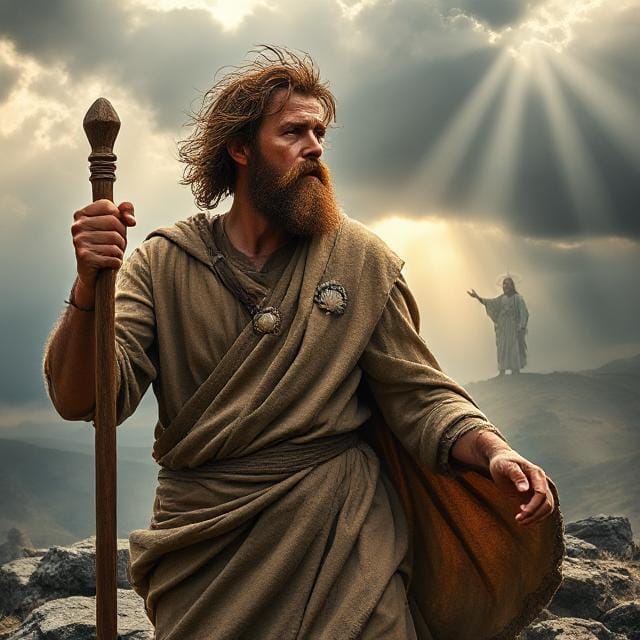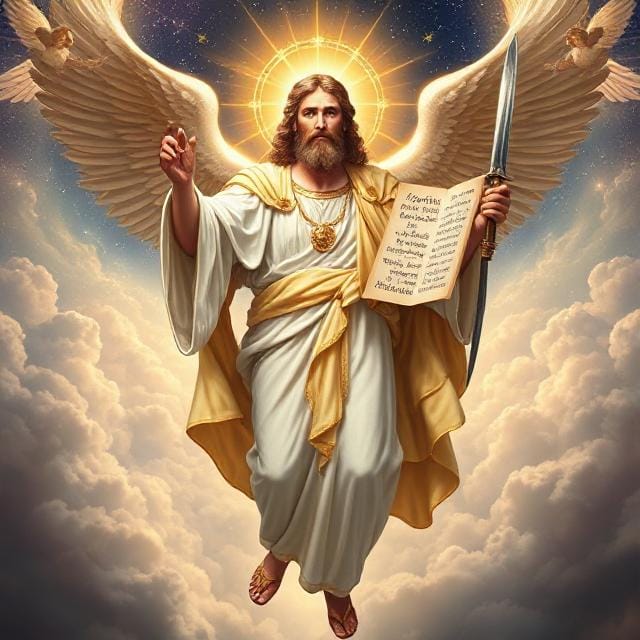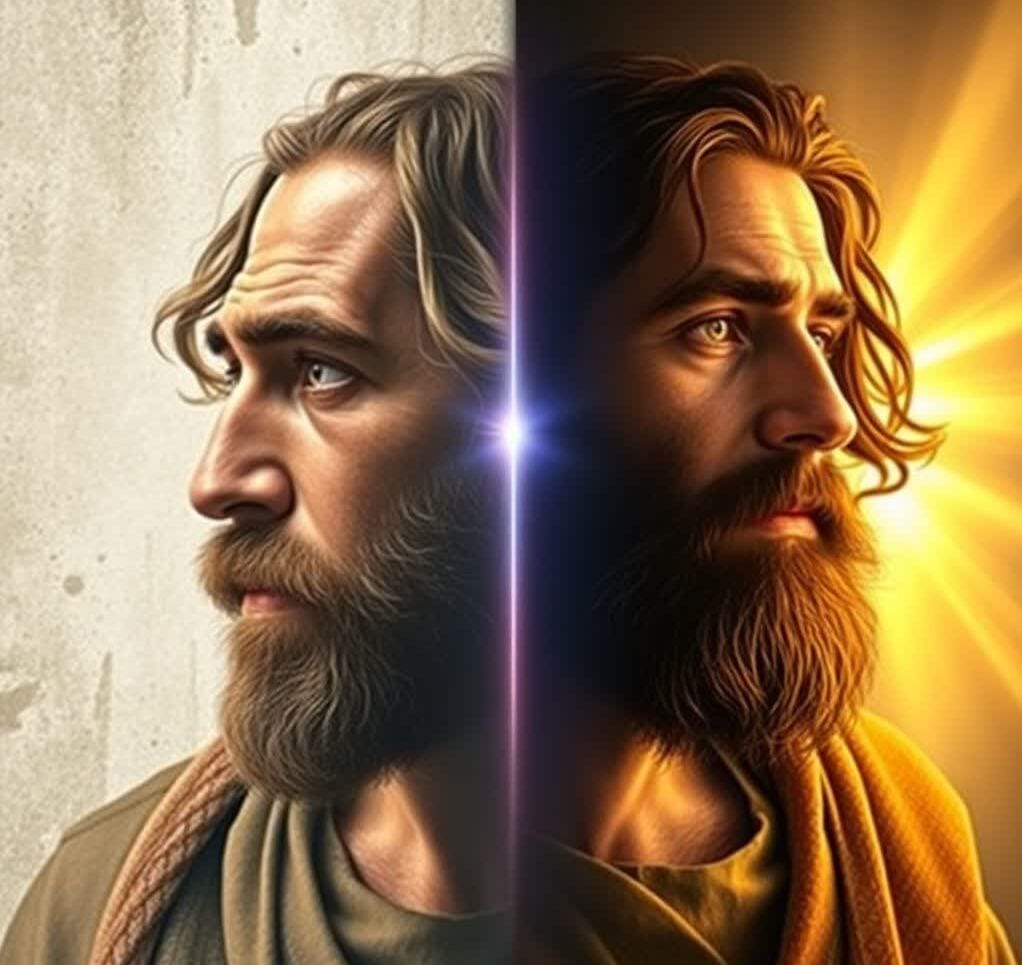James the Great: A Comprehensive Biography of the Fiery Apostle

Introduction: The Thunderous Apostle
In the annals of early Christianity, few figures stand out as vividly as James son of Zebedee. Known as James the Great to distinguish him from James son of Alphaeus, he was a man of passion, purpose, and profound sacrifice. As one of Jesus Christ’s Twelve Apostles, James earned the nickname “Son of Thunder” alongside his brother John, a title that hints at his fiery temperament and bold spirit. His life, though brief, left an indelible mark on the Christian faith, culminating in his martyrdom as the first Apostle to die for his belief in Jesus.
This article embarks on a journey through James’ life, exploring his roots as a fisherman on the Sea of Galilee, his transformative calling by Jesus, and his privileged role among the apostles. We’ll dive deep into his fiery nature—seen in moments of zeal and ambition—his witness to Jesus’ most sacred revelations, and his ultimate sacrifice under Herod Agrippa I. Beyond the biblical narrative, we’ll uncover his deep devotion to Christ’s message and examine traditions that extend his legacy to Spain and the pilgrimage of Santiago de Compostela.
✨ For more explorations into the Scriptures and insights on God’s divine plan, visit our Bible blog filled with faith-inspired articles.
Early Life: Roots by the Sea of Galilee
James was born into a world shaped by water, wind, and hard labor—the world of a Galilean fisherman. The Sea of Galilee, a freshwater lake surrounded by hills and bustling with activity, was more than a backdrop; it was the heartbeat of his early life. His father, Zebedee, owned a fishing business that employed hired servants, a detail noted in Mark 1:20: “Without delay he called them, and they left their father Zebedee in the boat with the hired men and followed him.” This suggests a family of relative prosperity, a step above the subsistence fishermen who eked out a living day by day.
Zebedee’s name, derived from Hebrew meaning “gift of God,” reflects a man of faith, perhaps preparing the soil for his sons’ eventual calling. James’ mother, traditionally identified as Salome, emerges in the Gospels as a devoted follower of Jesus. She stood at the foot of the cross (Mark 15:40) and was among the women who discovered the empty tomb (Mark 16:1). Some medieval traditions propose Salome was the sister of Mary, mother of Jesus, making James and his brother John cousins of the Messiah. While this connection is debated—stemming from interpretations of John 19:25—it underscores the intimate ties between James’ family and Jesus’ mission.
James grew up alongside his younger brother John, who would later pen the Gospel of John, three epistles, and the Book of Revelation. The two were partners in their father’s trade, mending nets and navigating the unpredictable waters of Galilee. Life as a fisherman demanded strength, resilience, and a keen sense of timing—qualities that would later define James’ apostolic journey. The family likely lived in or near Bethsaida, a fishing village on the lake’s northern shore, where Jesus would soon call his first disciples.
The socio-economic context of James’ upbringing offers clues to his character. Fishing was a vital industry, feeding local communities and supplying markets as far as Jerusalem. Zebedee’s ability to hire workers suggests a business savvy that James may have inherited—a practical foundation that would serve him when he traded nets for the mission of spreading the gospel. Yet, beneath this ordinary life lay an extraordinary destiny, one that began with a voice calling from the shore.
The Call: Leaving Nets for a Greater Catch
The turning point of James’ life came with startling simplicity. The Gospel of Mark captures the moment: “As Jesus walked beside the Sea of Galilee, he saw Simon and his brother Andrew casting a net into the lake, for they were fishermen… Then, going on a little farther, he saw James son of Zebedee and his brother John in a boat, preparing their nets. Without delay he called them, and they left their father Zebedee in the boat with the hired men and followed him” (Mark 1:16-20). This encounter was not a lengthy negotiation but an immediate summons—and an equally swift response.
What compelled James to abandon his livelihood at a moment’s notice? Perhaps he had heard of Jesus through John the Baptist’s preaching or witnessed his early miracles. The Gospel of John suggests an earlier meeting, where Andrew and another disciple (possibly John) encountered Jesus before introducing him to others (John 1:35-42). Regardless, the call was personal and irresistible. Jesus saw something in James—a raw, untamed potential that could be forged into a pillar of his movement.
Leaving Zebedee in the boat was no small act. It meant walking away from stability, family duty, and a predictable future. For James, it was the first test of his devotion, a willingness to prioritize faith over familiarity. The hired servants ensured the business could continue, but James and John chose a path of uncertainty, drawn by a man who promised to make them “fishers of men.” This decision revealed a boldness and trust that would define James’ apostolic career—a readiness to leap into the unknown for the sake of a higher calling.
Sons of Thunder: A Fiery Nature Unleashed
Jesus didn’t just call James; he named him. Alongside John, he dubbed them “Boanerges,” or “Sons of Thunder” (Mark 3:17). The origin of this nickname is not explicitly explained, but its meaning shines through in James’ actions. The title evokes power, intensity, and perhaps a touch of volatility—qualities that made James both a force and a foil in Jesus’ ministry.
One striking example of this fiery nature unfolds in Luke 9:51-56. As Jesus journeyed toward Jerusalem, a Samaritan village refused him hospitality due to tensions between Jews and Samaritans. James and John, incensed, asked, “Lord, do you want us to call fire down from heaven to destroy them?” Their suggestion recalls Elijah’s showdown with the prophets of Baal (2 Kings 1:10-12), revealing a dramatic flair and a readiness to wield divine judgment. Jesus rebuked them, saying, “You do not know what kind of spirit you are of, for the Son of Man did not come to destroy men’s lives, but to save them.” This correction was a pivotal lesson, tempering James’ zeal with mercy.
Another incident exposes James’ ambition. In Matthew 20:20-28, Salome approached Jesus, kneeling with a request: “Grant that one of these two sons of mine may sit at your right and the other at your left in your kingdom.” Whether she acted alone or at her sons’ prompting, James and John’s involvement is clear—they shared the desire for prominence. The other disciples were indignant, but Jesus used the moment to teach humility: “Whoever wants to become great among you must be your servant.” James’ boldness, while misguided, reflected a deep investment in Jesus’ mission, even if his understanding of glory needed refining.
These episodes paint James as a man of passion—quick to act, eager to defend, and unafraid to dream big. His fiery nature wasn’t a flaw to be eradicated but a gift to be directed. Under Jesus’ guidance, this thunderous spirit would evolve into a powerful witness for the gospel, though not without its growing pains.
✨ For more explorations into the Scriptures and insights on God’s divine plan, visit our Bible blog filled with faith-inspired articles.
Inner Circle: Witness to the Divine
James’ proximity to Jesus set him apart. Alongside Peter and John, he formed an inner circle, privy to moments that shaped the core of Christian theology. These experiences weren’t mere privileges; they were responsibilities, equipping James to lead and testify after Jesus’ departure.
The Raising of Jairus’ Daughter
In Mark 5:35-43, a synagogue leader named Jairus begged Jesus to heal his dying daughter. By the time they arrived, she was dead, and the mourners mocked Jesus’ claim that she was only sleeping. He sent them out, taking only Peter, James, and John into the room. There, he took the girl’s hand and said, “Talitha koum!”—“Little girl, I say to you, get up!” She rose, alive, to the astonishment of those present. For James, this was a firsthand encounter with Jesus’ authority over death, a foretaste of the resurrection to come.
The Transfiguration
Perhaps the most awe-inspiring moment came on a mountain, recorded in Matthew 17:1-9. Jesus led Peter, James, and John upward, where his appearance transformed—his face shining like the sun, his clothes dazzling white. Moses and Elijah appeared, conversing with him, a vision of the law and prophets affirming Jesus’ identity. Peter, ever impulsive, offered to build shelters, but a voice from a cloud declared, “This is my Son, whom I love; with him I am well pleased. Listen to him!” James fell facedown, overwhelmed by the divine presence. This event cemented Jesus’ divinity in his mind, a truth he’d carry to his death.
Gethsemane’s Agony
In the Garden of Gethsemane (Matthew 26:36-46), James witnessed Jesus at his most human. As the hour of betrayal neared, Jesus took Peter, James, and John aside, asking them to keep watch while he prayed in anguish. “My soul is overwhelmed with sorrow to the point of death,” he confided. Yet, they succumbed to sleep, unable to bear the weight of the moment. Jesus woke them, urging prayer against temptation. For James, this was a lesson in vigilance and the cost of discipleship—a cost he’d soon pay in full.
These events forged James into a foundational figure, entrusted with revelations that would sustain the early church. His presence at these turning points wasn’t random; it reflected a trust Jesus placed in him, preparing him for leadership and, ultimately, martyrdom.
Martyrdom: The First to Fall

James’ life ended abruptly, yet his death reverberated through history. Around AD 44, during a persecution under Herod Agrippa I, grandson of Herod the Great, James faced the sword. Acts 12:1-2 states: “It was about this time that King Herod arrested some who belonged to the church, intending to persecute them. He had James, the brother of John, put to death with the sword.” The brevity of the account belies its significance—James was the first Apostle martyred, a harbinger of the trials ahead.
Herod’s motives were political as much as religious. Acts 12:3 notes that he proceeded against Peter “because he saw that it pleased the Jews.” James’ execution likely served the same purpose, targeting a prominent leader to appease Jewish authorities hostile to the growing Christian sect. Beheading, a method often reserved for Roman citizens or notable figures, hints at James’ stature. Unlike Stephen’s stoning (Acts 7), this was a swift, official act, underscoring the threat he posed.
The year AD 44 aligns with historical records of Herod Agrippa I’s reign (AD 41-44), a time of tension between Jewish leaders and the nascent church. James’ death, just over a decade after Jesus’ crucifixion, marked a shift—persecution was no longer sporadic but systematic. His martyrdom galvanized the believers, proving that following Jesus could demand the ultimate price. Tradition holds that John, his brother, lived on, perhaps reflecting on James’ sacrifice as he wrote of love and endurance.
Devotion: A Life for Christ’s Message
James’ devotion wasn’t loud or boastful; it was lived. His immediate response to Jesus’ call, his presence at pivotal moments, and his willingness to die all testify to a faith that ran deep. While the Gospels don’t record his words extensively, his actions speak volumes. He left a thriving business, endured Jesus’ rebukes, and stood by him in triumph and trial. His martyrdom wasn’t a defeat but a culmination—a final act of allegiance to the message he’d embraced.
This devotion likely fueled his preaching, though details are scarce. The Spanish tradition claims he evangelized there before returning to Jerusalem, a journey reflecting his commitment to spread Christ’s teachings beyond Galilee. Whether historical or legendary, it aligns with his character—a man unafraid to venture far for his Lord. His life embodied Jesus’ call to take up the cross, a model of sacrifice that inspired the church’s resilience.
Legacy: From Jerusalem to Compostela
James’ influence didn’t end with his death. Tradition weaves a rich tapestry around his legacy, most notably linking him to Spain. One story claims that after his martyrdom, his disciples transported his body by boat—miraculously guided—to northwestern Spain, where it was buried. Centuries later, in the 9th century, a hermit discovered the tomb, marked by a star (hence “Compostela,” from campus stellae, “field of the star”). This site became Santiago de Compostela, a cathedral and pilgrimage destination.
The Camino de Santiago, a network of routes across Europe, draws pilgrims to James’ shrine, symbolizing penance, faith, and renewal. He’s depicted with a pilgrim’s staff and scallop shell, icons of the journey. As Spain’s patron saint, his image graces art, architecture, and festivals like the Feast of St. James (July 25). While the Spanish mission lacks firm evidence, its cultural impact is undeniable, extending James’ reach across continents and centuries.
Conclusion: A Thunderous Legacy
James son of Zebedee, was a man of fire and faith—a fisherman turned apostle, a Son of Thunder turned martyr. His life, though short, was a testament to the transformative power of Jesus’ call. From mending nets to witnessing miracles, from bold outbursts to silent sacrifice, James embodied a devotion that shaped Christianity’s early years. His martyrdom set a precedent, his legacy a pilgrimage, his story a challenge: to live passionately for what matters most.
✨ For more explorations into the Scriptures and insights on God’s divine plan, visit our Bible blog filled with faith-inspired articles.
